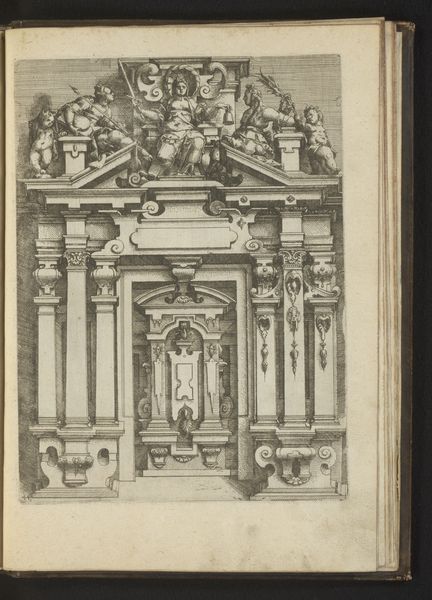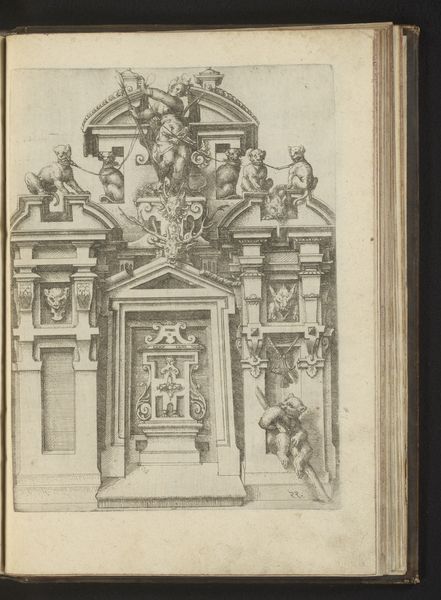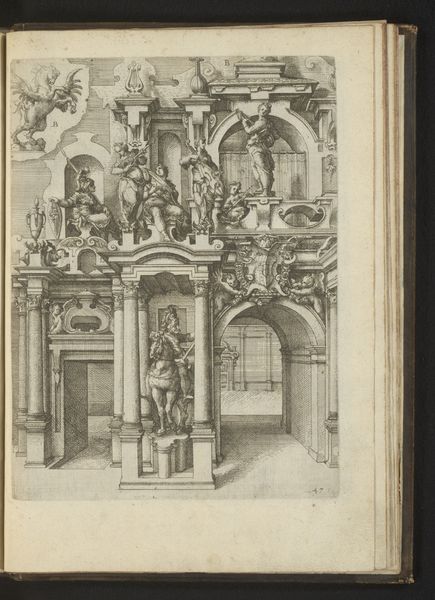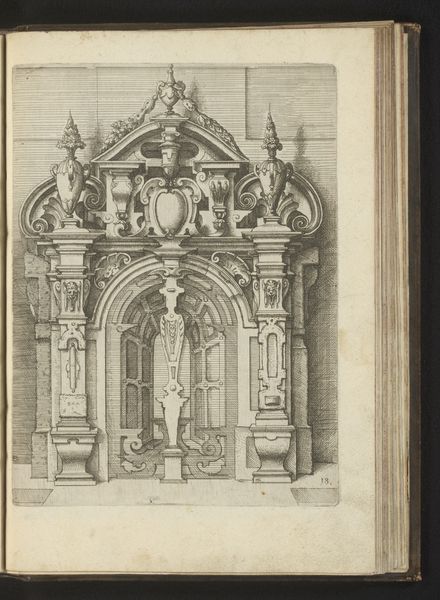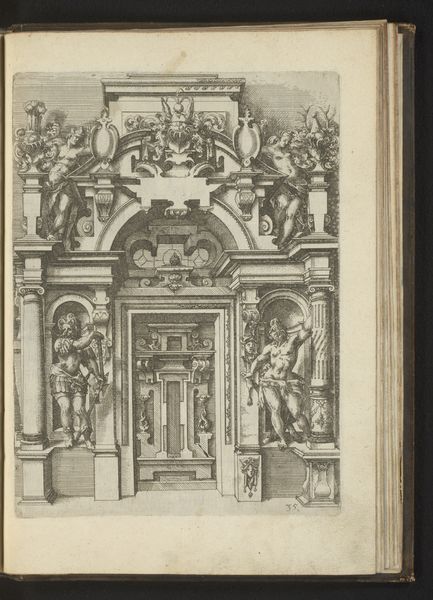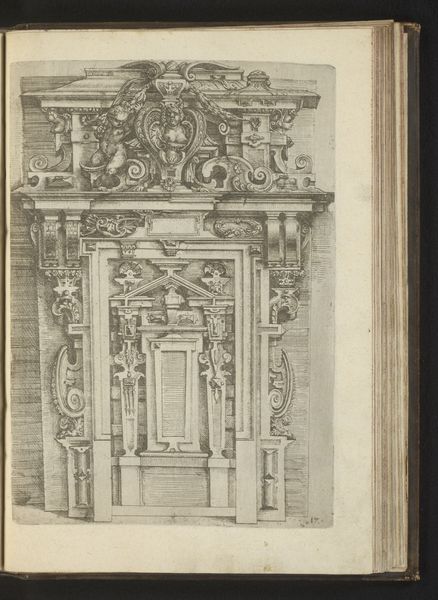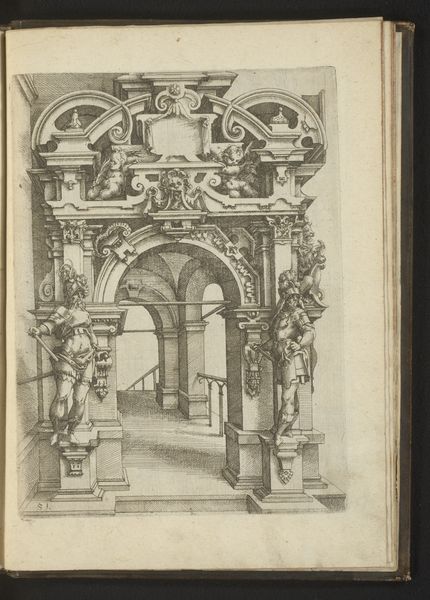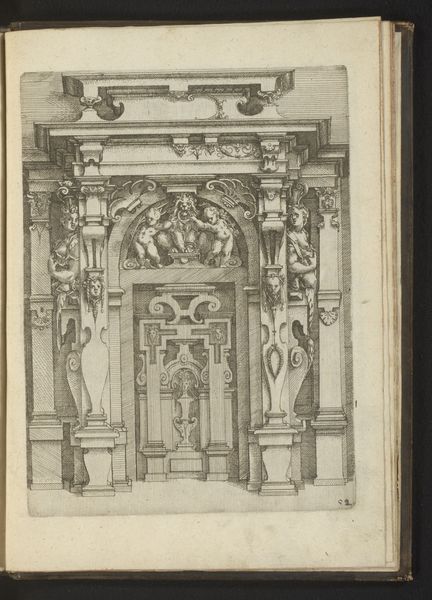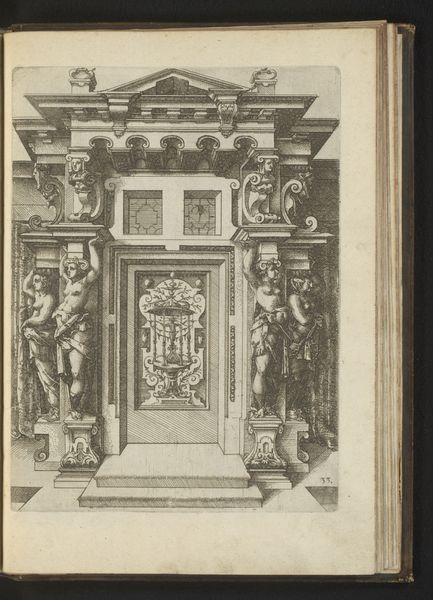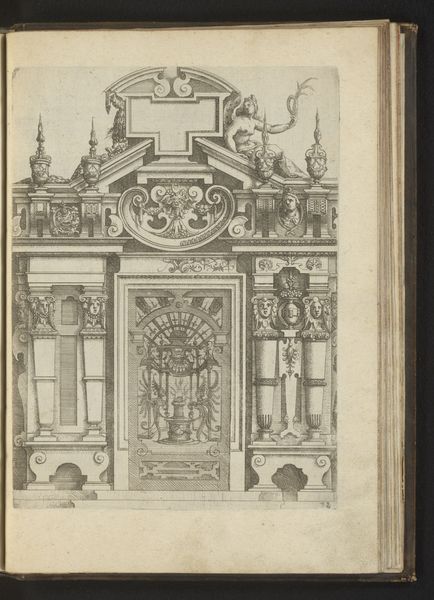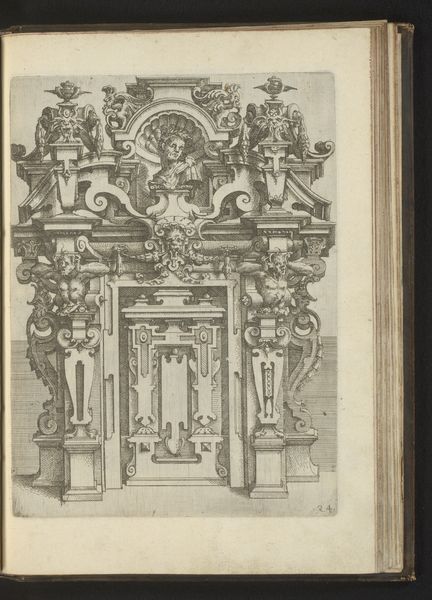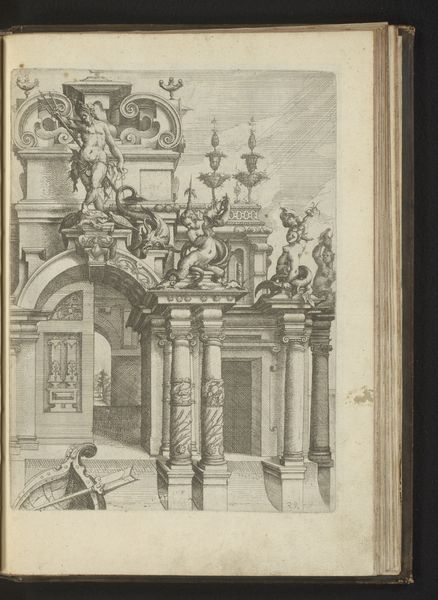
print, engraving, architecture
#
baroque
# print
#
figuration
#
11_renaissance
#
engraving
#
architecture
Dimensions: height 246 mm, width 186 mm
Copyright: Rijks Museum: Open Domain
Editor: So, this is “Portaal gedecoreerd met mascarons, een triton en sfinxen,” or "Portal decorated with mascarons, a triton, and sphinxes," by Wendel Dietterlin, made between 1593 and 1595. It looks like an engraving. It’s incredible how much detail the artist packed in. What jumps out at you about this piece? Curator: The most striking element is its emphasis on the materiality of architecture. The engraving meticulously renders stone and ornamentation, but more importantly, highlights the labor and expense required to produce such elaborate designs during the late Renaissance. It almost seems a prospectus meant for upper-class patronage. Editor: So, it's about the production of art as a status symbol? Curator: Precisely. The artist isn't just showcasing his artistic skill, but also implying the significant human capital—quarrymen, stonemasons, sculptors, and their workshops—necessary to manifest these designs. How do you interpret the abundance of mythical creatures? Editor: I guess, like with most Renaissance art, it's a reference to classical antiquity meant to imbue prestige. Curator: Yes, but even this choice speaks to the labor involved. The classical motifs would require specialized knowledge and skilled artisans, adding another layer of complexity—and therefore, cost—to the creation of this idealized portal. Note how Dietterlin isn’t merely depicting architecture; he’s presenting a blueprint for conspicuous consumption and class distinction, laid bare by his focus on the material processes. It reminds us to ask, 'Who paid for this? Whose hands made this?' Editor: That’s fascinating. I hadn't thought about it in terms of the physical effort and expense involved. Curator: Thinking about art as a product of materials, labor, and economic forces truly opens up new avenues for understanding the image and its creation. Editor: Definitely. Thanks to this materialist perspective, the image resonates with much more depth.
Comments
No comments
Be the first to comment and join the conversation on the ultimate creative platform.

